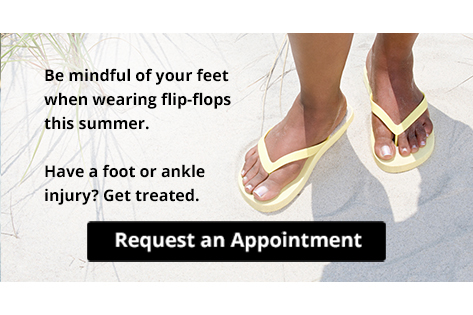 The medical name for the fungus that causes athlete’s foot is called dermatophytes. It attacks the dead outside layers of the skin on the feet, and can cause discomfort. This fungus is contagious, and lives in warm and moist environments. These can include shower room floors, public swimming pools, and surrounding areas. The fungus can enter the body through tiny cracks in the skin, and can gradually evolve into athlete's foot. It can be beneficial to wear appropriate shoes while frequenting these places, and this can be an effective prevention technique that may help to limit the spread. The symptoms that many patients experience can consist of redness between the toes and on the bottom of the feet, often accompanied by severe itching. If you are suffering from athlete's foot, it is suggested that you seek professional advice from a podiatrist who can offer you the right treatment options.
The medical name for the fungus that causes athlete’s foot is called dermatophytes. It attacks the dead outside layers of the skin on the feet, and can cause discomfort. This fungus is contagious, and lives in warm and moist environments. These can include shower room floors, public swimming pools, and surrounding areas. The fungus can enter the body through tiny cracks in the skin, and can gradually evolve into athlete's foot. It can be beneficial to wear appropriate shoes while frequenting these places, and this can be an effective prevention technique that may help to limit the spread. The symptoms that many patients experience can consist of redness between the toes and on the bottom of the feet, often accompanied by severe itching. If you are suffering from athlete's foot, it is suggested that you seek professional advice from a podiatrist who can offer you the right treatment options.
Athlete’s foot is an inconvenient condition that can be easily reduced with the proper treatment. If you have any concerns about your feet and ankles, contact one of our podiatrists from Lewis Wolstein, DPM, P.C. & Associates. Our doctors will treat your foot and ankle needs.
Athlete’s Foot: The Sole Story
Athlete's foot, also known as tinea pedis, can be an extremely contagious foot infection. It is commonly contracted in public changing areas and bathrooms, dormitory style living quarters, around locker rooms and public swimming pools, or anywhere your feet often come into contact with other people.
Solutions to Combat Athlete’s Foot
- Hydrate your feet by using lotion
- Exfoliate
- Buff off nails
- Use of anti-fungal products
- Examine your feet and visit your doctor if any suspicious blisters or cuts develop
Athlete’s foot can cause many irritating symptoms such as dry and flaking skin, itching, and redness. Some more severe symptoms can include bleeding and cracked skin, intense itching and burning, and even pain when walking. In the worst cases, Athlete’s foot can cause blistering as well. Speak to your podiatrist for a better understanding of the different causes of Athlete’s foot, as well as help in determining which treatment options are best for you.
If you have any questions please feel free to contact our office located in Co-Op City, NY . We offer the newest diagnostic and treatment technologies for all your foot and ankle needs.




